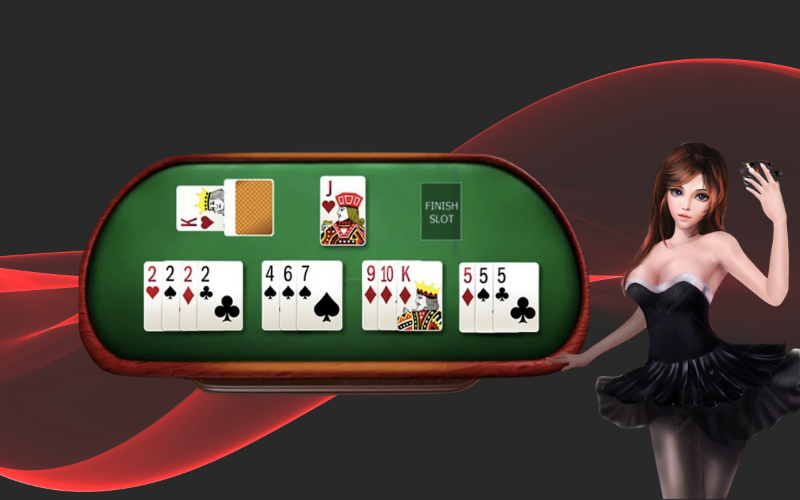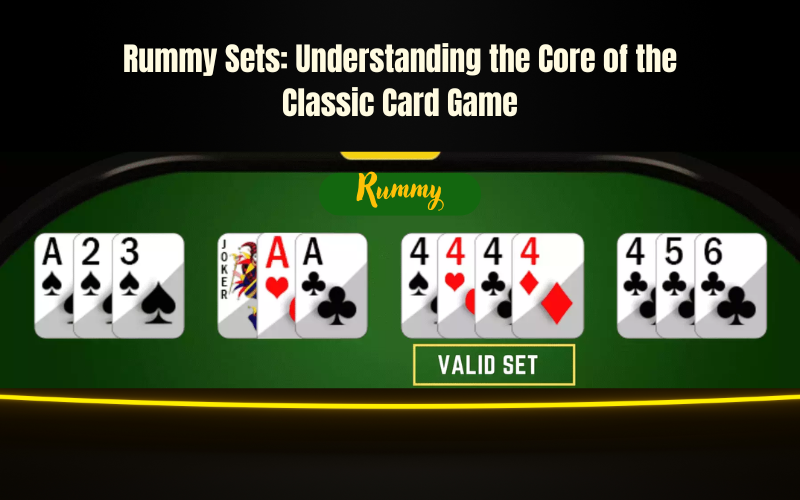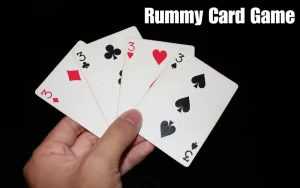Rummy is one of the most popular card games worldwide, known for its combination of skill, strategy, and a bit of luck. Whether playing a casual game with friends or participating in competitive tournaments, understanding the concept of Rummy sets is crucial for success. In Rummy, a set is one of the primary ways to form valid combinations, and mastering it can significantly enhance your chances of winning.
In this article, we’ll dive into rummy sets and their different types and provide some tips for using them to your advantage. Whether you’re a beginner or an experienced player, this guide will help you improve your gameplay and understand one of the most essential elements of the game.
What is a Rummy Set?
In the game of Rummy, a set is a group of three or more cards of the same rank but different suits. The basic rule for forming a set is that all the cards must share the same rank, but each belongs to a different suit. For example, a set could consist of the 7 of hearts, the 7 of clubs, and the 7 of diamonds.
A valid Rummy set has the following characteristics:
- Same Rank: All cards in a set must be the same rank (such as all Jacks, all 10s, etc.).
- Different Suits: Each card in the set must be from a different suit (hearts, diamonds, clubs, or spades).
- At Least Three Cards: A set must have at least three cards to be considered valid. You can add more cards to a set, making it longer if you wish.
For example, the following are valid Rummy sets:
- 9♠, 9♦, 9♥ (Set of 9s from different suits)
- K♣, K♦, K♠, K♥ (Set of Kings, a four-card set)
It’s important to note that a set cannot include cards of the same suit or fewer than three cards, as this would not be considered a valid set.

Types of Rummy Sets
While all Rummy sets follow the basic rule of having the same rank and different suits, variations of sets add an exciting twist to the game. Let’s take a closer look at the two main types of sets you’ll encounter in Rummy: the pure set and the impure set.
- Pure Set (or Natural Set):
- A pure set is a set that does not involve any jokers or wild cards. It consists solely of cards with the same rank and different suits. A pure set is the most straightforward and desirable set in Rummy because it is entirely legitimate.
- Example:
- 4♣, 4♦, 4♠ – A pure set of fours, each from a different suit.
- Impure Set (or Joker Set):
- An impure set includes at least one joker, which is used as a substitute for any card in the deck. In Rummy, jokers are wild cards representing any card in the game. For example, if you’re missing the 8♠ in a set, you can use a joker to complete it. An impure set is still valid but requires a joker to complete the combination.
- Example:
- 8♣, 8♦, Joker – An impure set of eights, with the Joker standing in for the 8♠.
In Rummy, forming pure sets is generally considered more desirable because they are composed entirely of real cards from the deck. However, using jokers effectively to create impure sets can still help you win if you’re stuck or need to complete your hand quickly.
Tips for Creating and Using Rummy Sets
Mastering the creation and use of rummy sets is critical to winning the game. Here are some helpful tips to improve your game and make the best use of your sets:
- Focus on Pure Sets First: Whenever possible, prioritize creating pure sets as they are more valuable and require no reliance on wild cards. Aim to complete these early in the game so you can build the rest of your hand around them.
- Use Jokers Wisely: While jokers help form impure sets, don’t waste them. Use them strategically to complete sets when you’re missing just one card or to quickly create a combination if you’re trying to finish your hand. However, please don’t rely on jokers too heavily, as they are limited and can sometimes cause you to miss out on better opportunities.
- Balance Between Sets and Sequences: While sets are important, don’t forget that sequences (runs of consecutive cards in the same suit) are also necessary to win in Rummy. Aim to balance the creation of both sets and sequences to give yourself more flexibility and options in your hand.
- Pay Attention to Discards: Watch the cards your opponents discard. If they discard a card you need for a set, grab it immediately. The ability to read your opponents’ hands can help you complete sets and anticipate what they might be trying to do.
- Don’t Overload Your Hand with Similar Cards: Avoid holding on to too many cards of the same rank but different suits, especially if you’re far from completing a set. You can’t win by simply holding a lot of incomplete sets. Stay focused on completing a few sets or sequences at a time.
- Plan for the Long Term: Don’t rush to complete a set. Rummy requires patience and strategy. Think ahead about which cards you need to complete your sets and how you can use your cards to build sequences. The more you play, the better you’ll get at making these decisions quickly.
Conclusion
Rummy sets are the backbone of a successful Rummy strategy. Whether building pure sets or utilizing jokers to create impure sets, understanding how to form and use sets effectively will significantly enhance your gameplay. By following the tips above, you can make smarter decisions and increase your chances of winning.
Remember, Rummy Lite is a game of skill and strategy; mastering the art of creating sets will help you rise to the top. So, get your cards ready and start practicing your rummy sets today—it’s time to show your opponents who’re in control!








